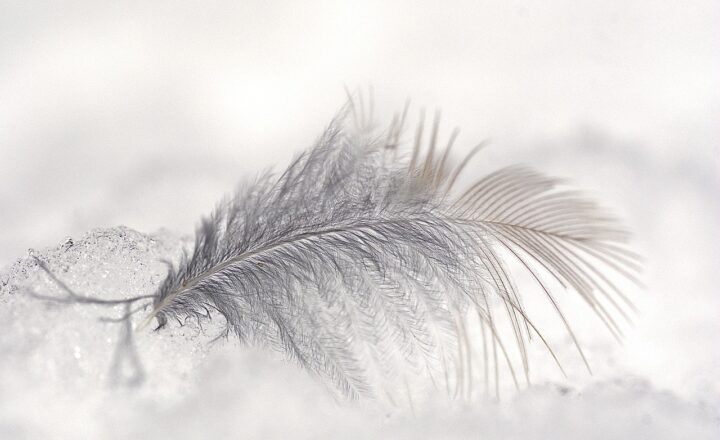The Fascinating Role of Feathers in Ancient Fashion Across Cultures
November 17, 2024

Feathers have long invoked fascination, not only for their beauty but also for their versatile role in human adornment. Across ancient civilizations, feathers were more than decorative elements; they held cultural significance and conveyed status, spirituality, and artistic expression. This article explores the fascinating role of feathers in ancient fashion across various cultures, shedding light on their historical importance and the meanings attached to them.
1. The Symbolism of Feathers in Ancient Civilizations
Feathers often represented ideas that transcended mere aesthetics. In many cultures, they were imbued with symbolism, relating to the divine and the natural world. Here are a few examples of how feathers were perceived:
- Egyptian Culture: In Ancient Egypt, feathers symbolized truth and justice, notably in the context of the goddess Ma’at, who was often depicted with an ostrich feather. The weight of the feather was compared to the heart of the deceased in the afterlife, determining their fate.
- Native American Cultures: In many Native American tribes, feathers were considered sacred. They were worn by warriors as symbols of bravery and honor. Different types of feathers represented different characteristics and were often used in ceremonial dress, denoting the wearer’s status and achievements.
- Mesoamerican Civilizations: The Aztecs and Mayans adorned themselves with feathers, which were often associated with the gods and spirituality. Vibrantly colored feathers were meticulously crafted into headdresses and capes for nobility, signifying power and connection to the divine.
Feathers’ pervasive symbolism made them an integral part of the fashion narrative in ancient societies, often seen as carriers of messages from one world to another.
2. Feathers in Clothing and Accessories
From ceremonial wear to everyday garments, feathers were skillfully incorporated into clothing and accessories by various cultures. This section highlights unique uses of feathers in ancient fashion:
- The Egyptian Pharaohs: Luxurious garments embellished with colorful feathers exemplified the wealth and power of Pharaohs. Feathers adorned their crowns, headdresses, and capes, often made from the feathers of exotic birds, such as pelicans and ostriches. The vibrant colors conveyed strength and authority, befitting rulers who believed their heavenly status required distinct attire.
- The Native American Headdresses: Each feather in a Native American headdress told a story—whether of great achievements, tributes, or journeys. The iconic war bonnets, adorned with feathers from respected birds such as eagles, were a testament to the wearer’s bravery and were often worn during significant ceremonies, including tribal gatherings and dances.
- Mayan and Aztec Fashion: The distinctive feathered cloaks of the Aztec nobility were made from thousands of feathers meticulously sewn together. These garments served as dramatic visual displays of wealth and were often worn during rituals. The intricate designs were not only fashionable but also carried cultural narrative and artistic identity.
The blend of artistry and nature in clothing made feathers a celebrated choice in ancient fashion.
3. Crafting Techniques: Creating Feathered Finery
Creating garments and accessories with feathers required exceptional skill and artistry. Ancient artisans developed refined techniques to transform feathers into symbols of elegance and grace. Key aspects of feather crafting included:
- Feather Weaving: This intricate process involved attaching feathers to textiles or leather using various sewing techniques. The patterns and arrangements were often symbolic, depicting cultural motifs and stories.
- Dyeing Feathers: To achieve a spectrum of colors, artisans dyed feathers using natural substances such as plants, minerals, and insects. This process enhanced the aesthetic appeal of feathered attire, allowing for richer designs that captured the eye and imagination.
- Feather Embellishment: Artists also used feathers to embellish masks, ceremonial attire, and decorative items. These embellishments served to amplify the mystical or warrior-like essence of the wearer, contributing to a spiritual connection within the cultural fabric of society.
The exceptional craftsmanship of feathered garments directly contributed to their status as symbols of strength and beauty across ancient cultures.
4. Feathers in Ritual and Spiritual Practices
Feathers were not solely for adornment; they also played a vital role in rituals and spiritual practices. Many cultures believed that feathers possessed supernatural qualities that could connect them with higher powers. Examples of this include:
- Native American Spirituality: Feathers were often used in smudging ceremonies, where smoke from burning sage or other sacred plants, wafted over objects and individuals for purification. Feathers represented the element of air, believed to carry prayers to the spirit world.
- Mayan Rituals: In ancient Mayan ceremonies, priestly figures often wore feathered garments while conducting rituals. Feathers were believed to help convey the priests’ messages to the gods, symbolizing their elevated status in the spiritual realm. Ritual masks adorned with feathers often represented deities, further indicating the connection between the material and spiritual worlds.
- Egyptian Funerary Practices: During burial rituals, the inclusion of feathers was thought to provide the deceased with safe passage to the afterlife. The iconic ‘feather of Ma’at’ was often placed on the scales during judgement, symbolizing truth and justice in the journey beyond life.
In these practices, feathers emerged as conduits between the temporal and the eternal, making them significant within the spiritual tapestry of ancient societies.
5. Conclusion: The Lasting Legacy of Feathers in Fashion
The role of feathers in ancient fashion is a rich tapestry woven with history, culture, and artistry. As symbols of status, spirituality, and natural beauty, feathers transcended their physical presence, leaving behind a legacy that continues to resonate today. Modern fashion pays homage to these ancient traditions, often incorporating feathers into contemporary designs, evoking the same fascination that drove ancient cultures.
In exploring the roles of feathers across ancient civilizations, we uncover not only the ingenuity of human creativity but also a profound connection to nature, spirituality, and identity that continues to inspire and intrigue.
So the next time you come across feathers, whether in fashion or art, take a moment to appreciate their incredible journey through time and cultures.








